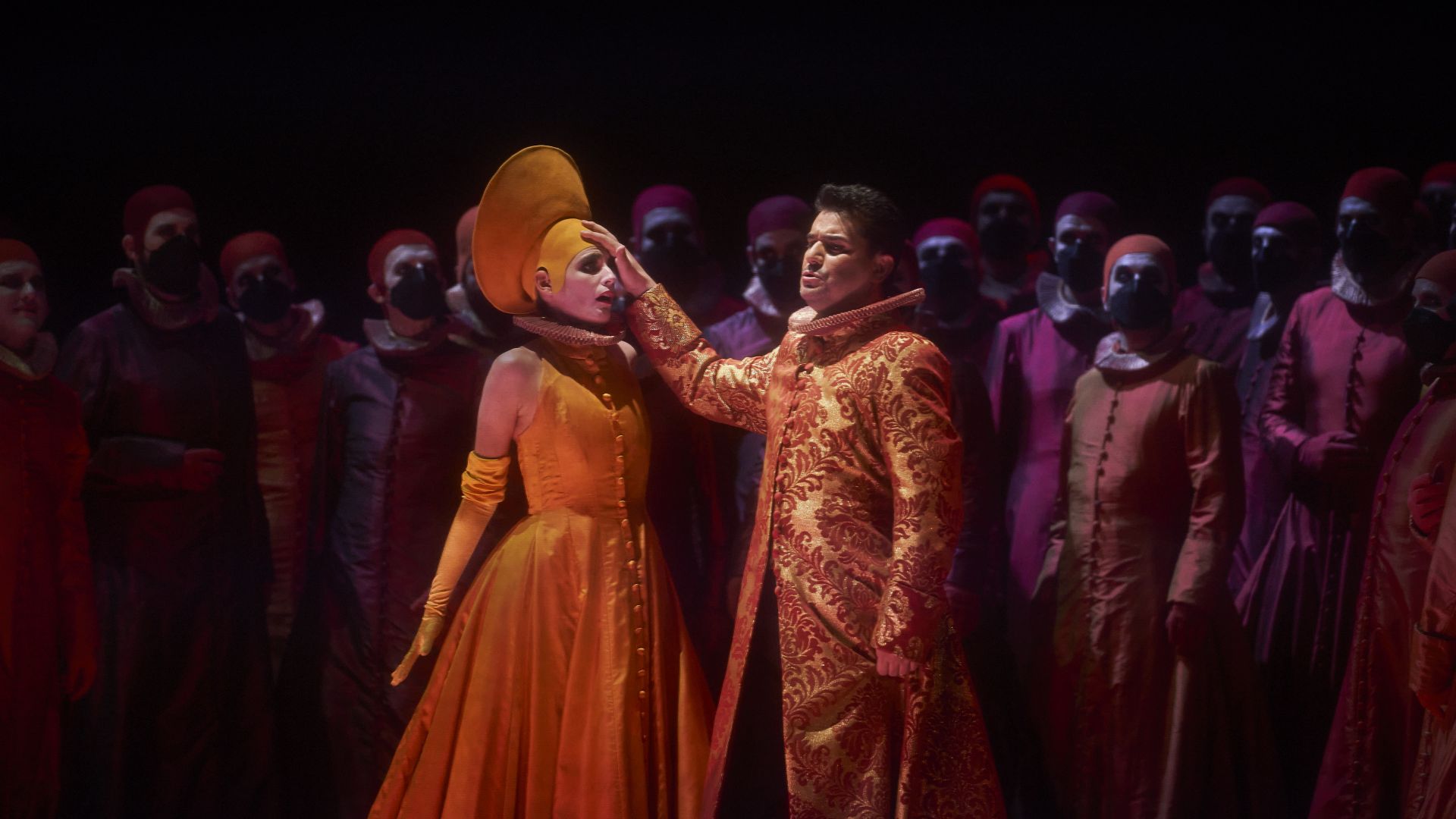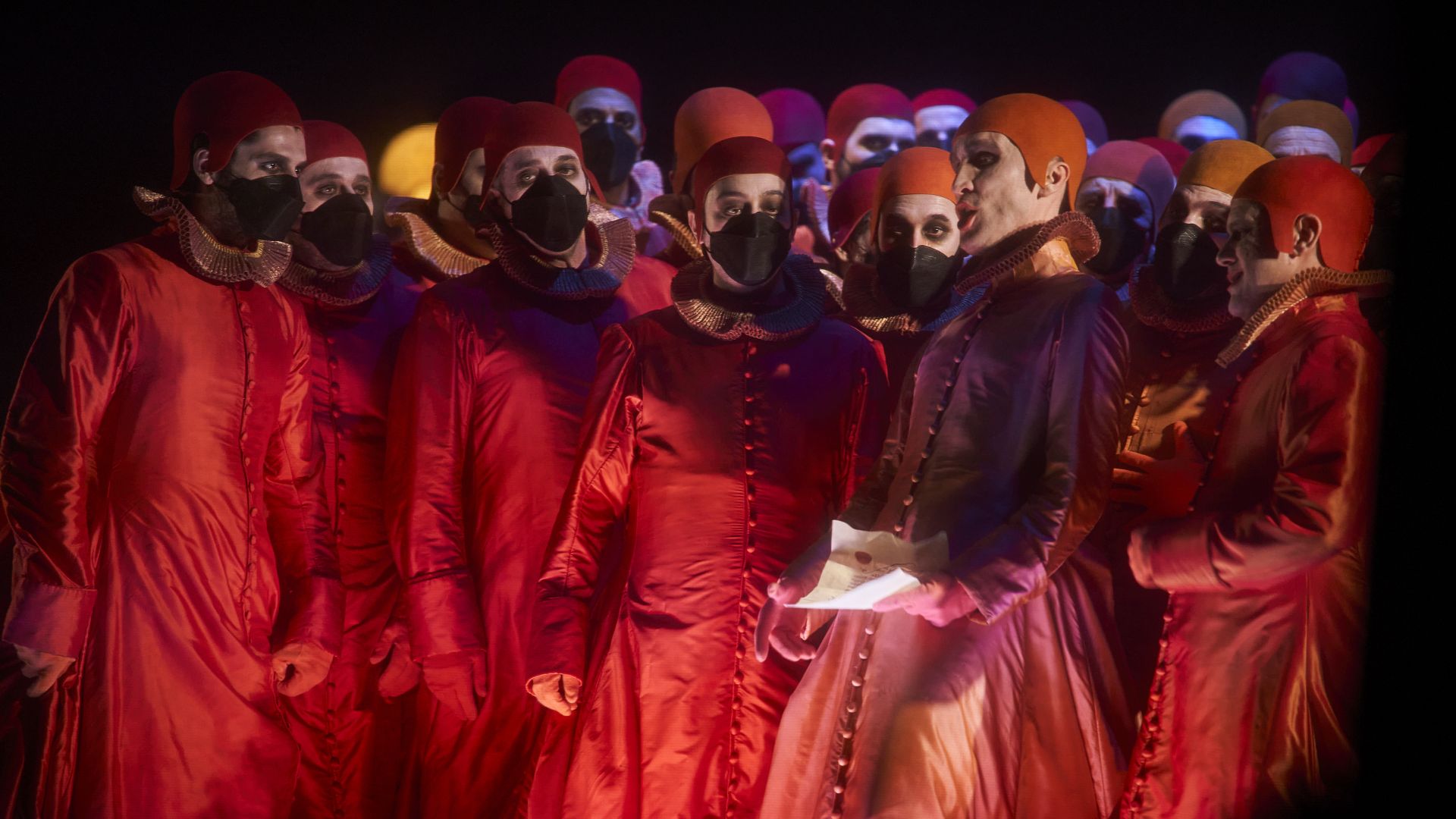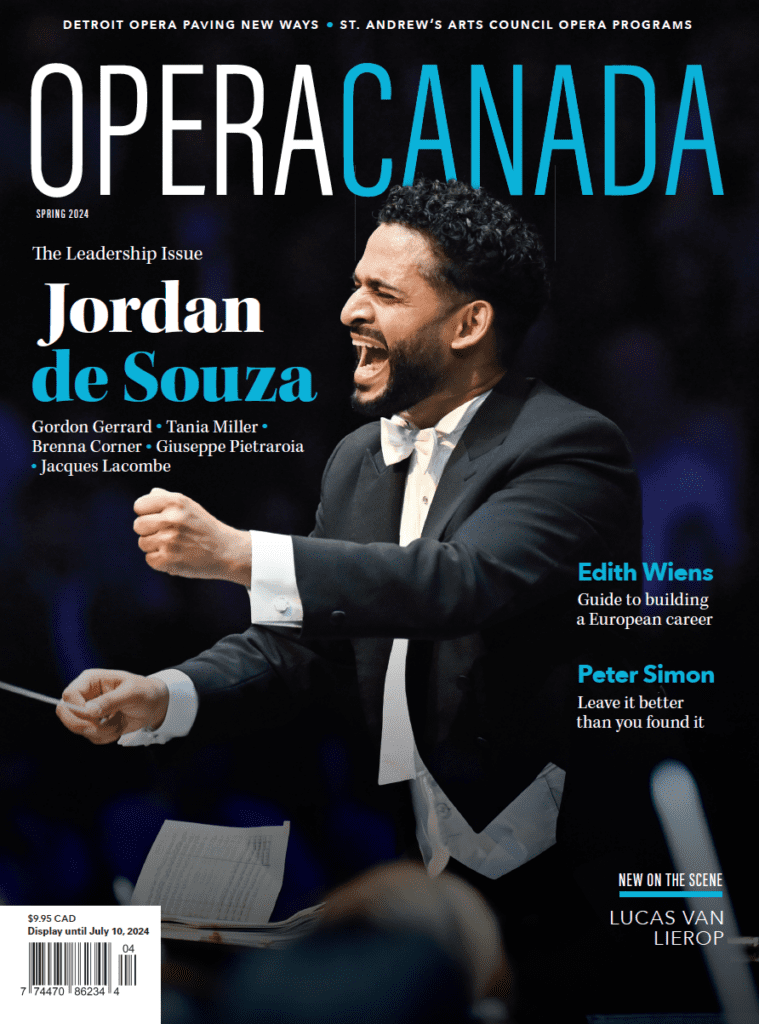There’s no denying the popularity of Verdi’s Rigoletto. Barcelona’s Gran Teatre del Liceu has staged it 375 times, the second most frequently performed work in the theatre’s 175-year history. Fifteen further performances took place last Nov. 28-Dec. 19 in a revival of Monique Wagemakers’s 2017 staging. Sets were by Canadian designer Michael Levine, originally created for De Nederlandse Opera in 1996 and rebuilt for Madrid’s Teatro Real in 2009. The Liceu’s Dec. 13 performance was videotaped live and currently streams for free on OperaVision.eu until Sept. 11.
Wagemakers’s production certainly lived up to its billing on the Liceu’s web site as “Contradictions and conflicts in an extraordinary score.” No quibbling about the extraordinary score, which Verdi once opined was “the best, the most effective subject I have so far set to music.” As for the contradictions and conflicts, chalk those up to Wagemakers.
Wagemakers’s Rigoletto is not a hunchback. So, why then does the title character refer to himself as “difforme” (deformed), and Marullo, Sparafucile, and Maddalena call him “gobbo” (hunchback)? Strike one.
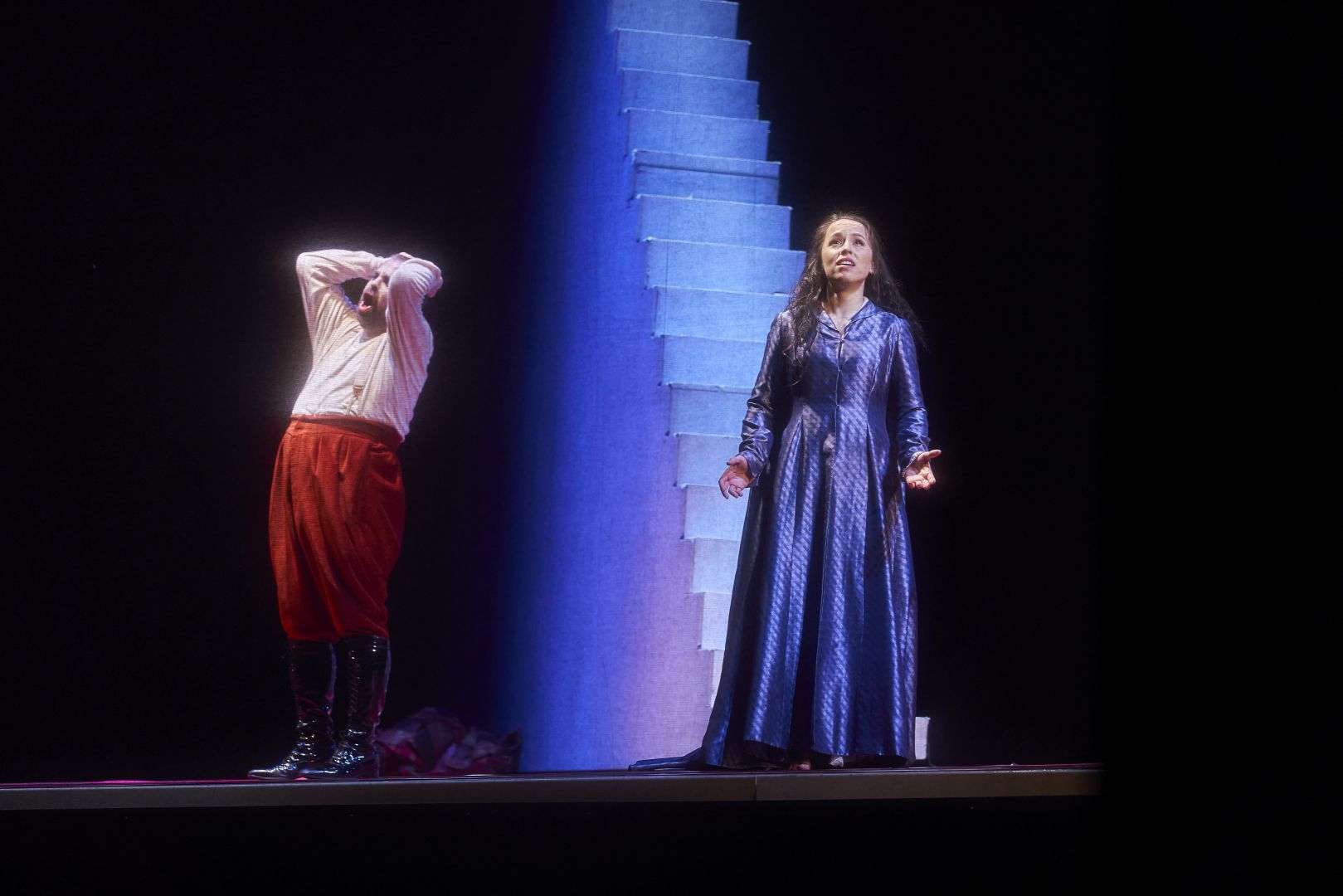
L-R: Markus Brück (Rigoletto) and Aigul Khismatullina (Gilda) in Gran Teatre del Liceu’s Rigoletto. Photo: David Ruano
In a promotional clip on liceuplus.com, Wagemakers claims that “the story is about the abuse of power. The Duke abuses his power over Rigoletto, and Rigoletto abuses his power over Gilda. And that’s the main theme…” True, the amoral Duke, whose original Act III order to Sparafucile, “Tua sorella e del vino,” was reinstated by Wagemakers and dramaturge Klaus Bertisch, has little or no regard for the feelings of others. As for Rigoletto, he has his daughter’s honour to protect, albeit over-protectively (“nulla in terra più l’uomo paventa, se dei figli difende l’onor”). Strike two.
“I listen to music with my eyes,” Wagemakers said in a videotaped promotion on the Liceu’s web site. But it’s surely better to listen to Verdi’s music with your ears. That way there’s no mistaking, for instance, Rigoletto’s aching line to Gilda, “Piangi, fanciulla, piangi… scorrer fa il pianto sul mio cor” as anything other than the words of a devoted father, not an abusive one. Strike three.
Levine’s set is minimalist. It consists of a large, rectangular hydraulically powered platform that can be raised, lowered or tilted, placed in the deck of a red-carpeted stage bordered on three sides by a wall of red flats. A trap door in the platform facilitates some exits. The lone major set prop is a 23-step staircase in the centre of the platform, a suggestive nod to the house in which Gilda has been installed. The set does allow for an effective staging of the quartet, “Bella figlia dell’amore,” the Duke pawing Maddalena on the forestage while Rigoletto and Gilda stand atop the raised platform. Rigoletto’s appearance after Gilda’s murder is also ingeniously handled, his “walk down the road” effected by stationing him upstage on the platform and letting it, teeter-totter-like, come to rest as a raked stage sloping down to the orchestra pit.
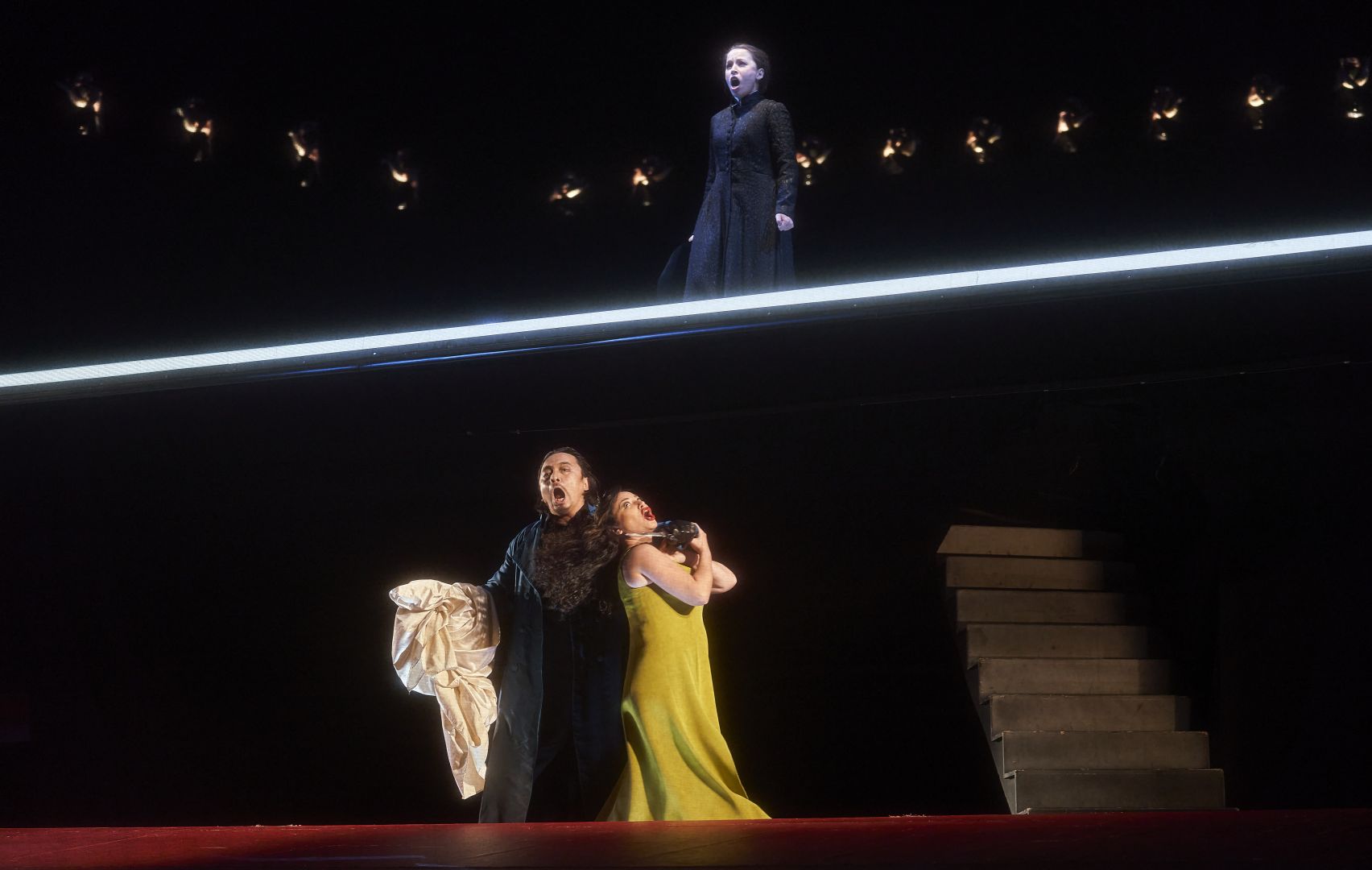
L-R: Aigul Khismatullina (Gilda, above), Liang Li (Sparafucile) and Nino Surguladze (Maddalena) in Gran Teatre del Liceu’s Rigoletto. Photo: David Ruano
Cor van den Brink’s revival of Reinier Tweebeeke’s lighting is first-rate and Sandy Powell’s costumes, though not exact historical copies, place the action in the 17th century. Courtiers are assembled in nine colour-coded groups from bright orange to dark purple, the older the courtier the darker the colour of the robe. Rigoletto’s costume combines all nine colours.
The five main roles were double cast, and the livestream features the second cast. Markus Brück is an accomplished Rigoletto, mockingly mouthing the words of Monterone’s curse, capturing the various changes of mood in “Pari siamo,” and ferociously ripping into the consonants of “Cortigiani, vil razza dannata.” Samir Pirgu sings the Duke’s “Questa o quella” stiffly, but does not disappoint in the opera’s greatest hit, “La donna è mobile,” which is replete with a concluding interpolated high B.
Making her Liceu debut, Aigul Khismatullina is a comely Gilda, producing very free top notes, such as her interpolated high D-Flat on the final “Addio” with the Duke, and her interpolated high E-Flat at the end of Act II. In “Caro nome,” she sings the smooth ascending scale staccato, matching the articulation of the upper winds, and stays on the B rather than rise to the printed E on “Gaultier Maldè” in the coda.
Liang Li, also making a Liceu debut, colours Sparafucile with just the right amount of dark timbre, while mezzo Nino Surguladze is a sultry-sounding and curvaceous Maddalena. Laura Vila as Giovanna, Mattia Denti as Monterone, Michal Partyka as Marullo, Moisés Marín as Borsa, Stefano Palatchi as Ceprano, Sara Bañeras as the Countess and Helena Zaborowska as the Pageboy all acquit themselves well.
Unable to get the solo trumpet and solo trombone to play their opening 16th note together, it might have seemed initially as if conductor Daniele Callegari and the Liceu’s Symphony Orchestra were in for a long two hours, but fortunately the remainder of their traversal through Verdi’s score is a compelling one. Last but not least, Pablo Assante’s Liceu Opera House Chorus sparkles in the Rossini-esque “Zitti, zitti.”
Watch the production on OperaVision until September 11, 2022.
Opera Canada depends on the generous contributions of its supporters to bring readers outstanding, in-depth coverage of opera in Canada and beyond. Please consider subscribing or donating today.

